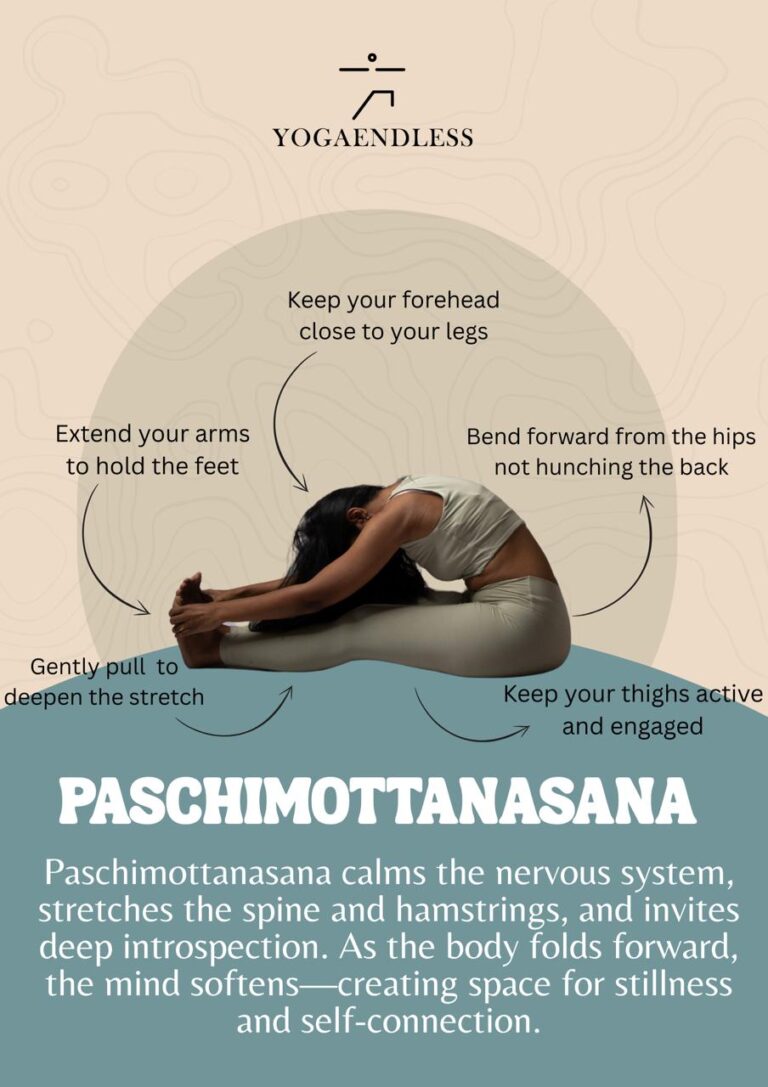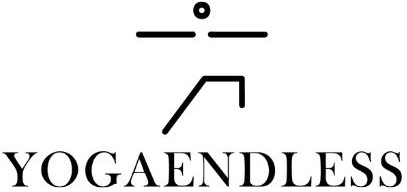Paschimottanasana (Seated Forward Bend): Journey Inward Through Stillness

Paschimottanasana, or Seated Forward Bend, is a calming, introspective pose that encourages deep physical and mental relaxation. It’s one of the foundational asanas in yoga, often practiced to stretch the entire back body, reduce stress, and encourage a sense of surrender.
This pose reminds us that yoga is not just about reaching outward — it’s equally about turning inward.
What Is Paschimottanasana?
In Sanskrit, Paschima means “west” (referring to the back of the body), Uttana means “intense stretch,” and Asana means “pose.” Together, Paschimottanasana refers to the intense stretch of the west (back) side of the body.
It is a seated pose that folds the body forward over extended legs, offering both a deep stretch and an opportunity for quiet reflection.
Other common names for this pose include:
- Seated Forward Bend
- Intense Dorsal Stretch Pose (a literal translation)
- Two-Legged Forward Fold
How to Do Paschimottanasana (Step-by-Step Instructions)
- Sit on your mat with your legs extended straight in front of you. Keep your spine tall.
- Flex your feet so your toes point toward the ceiling.
- Inhale and raise your arms overhead, lengthening your spine.
- Exhale and hinge at the hips, reaching forward with your arms.
- Try to grasp your feet, ankles, or shins, depending on your flexibility.
- Keep your spine long rather than rounding deeply — lead with your heart.
- Relax your neck and shoulders, staying in the pose for 5–10 breaths.
- To release, gently inhale and lift your torso back up.
Benefits of Paschimottanasana
- Stretches the spine, hamstrings, and lower back.
- Calms the nervous system and relieves stress
Improves digestion and stimulates abdominal organs. - Helps reduce anxiety, fatigue, and mild depression.
Promotes introspection and inner peace. - Aids in relieving menstrual discomfort.
What Not to Do (Common Mistakes)
- Avoid rounding the spine. Hinge from the hips and maintain length.
- Don’t force the stretch.
- Let the body fold gradually over time.
- Avoid locking the knees.
- Keep a micro-bend if needed.
- Not recommended after meals. Practice on an empty stomach.
- Use props like a strap or bolster if flexibility is limited.
Paschimottanasana teaches us patience, presence, and the power of letting go. In its quiet intensity, it nurtures flexibility not just in the body but also in the mind. By folding forward, we learn to slow down, soften, and return to ourselves.
In every breath forward lies a quiet return to balance.
